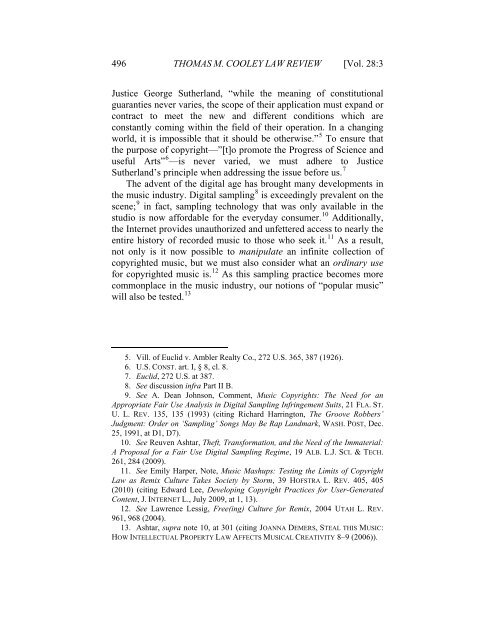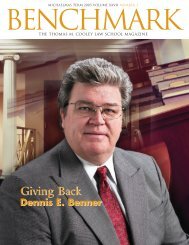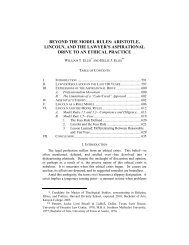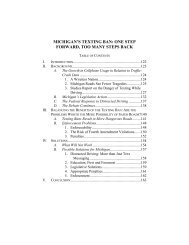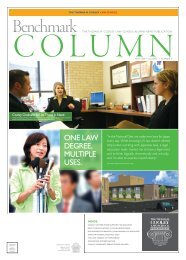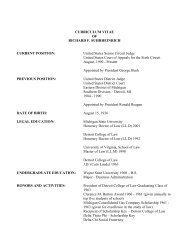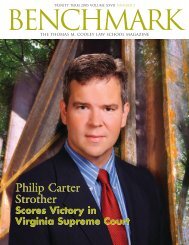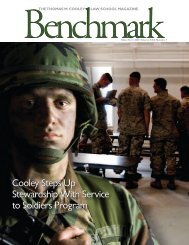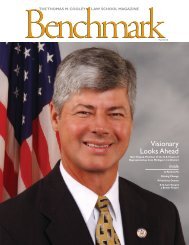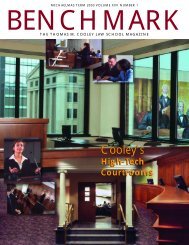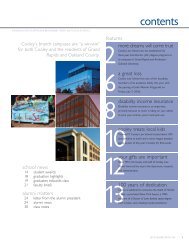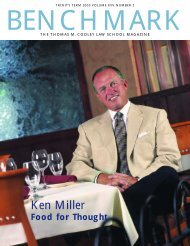Blanch It, Mix It, Mash It - Thomas M. Cooley Law School
Blanch It, Mix It, Mash It - Thomas M. Cooley Law School
Blanch It, Mix It, Mash It - Thomas M. Cooley Law School
Create successful ePaper yourself
Turn your PDF publications into a flip-book with our unique Google optimized e-Paper software.
496 THOMAS M. COOLEY LAW REVIEW [Vol. 28:3<br />
Justice George Sutherland, “while the meaning of constitutional<br />
guaranties never varies, the scope of their application must expand or<br />
contract to meet the new and different conditions which are<br />
constantly coming within the field of their operation. In a changing<br />
world, it is impossible that it should be otherwise.” 5 To ensure that<br />
the purpose of copyright—”[t]o promote the Progress of Science and<br />
useful Arts” 6 —is never varied, we must adhere to Justice<br />
Sutherland’s principle when addressing the issue before us. 7<br />
The advent of the digital age has brought many developments in<br />
the music industry. Digital sampling 8 is exceedingly prevalent on the<br />
scene; 9 in fact, sampling technology that was only available in the<br />
studio is now affordable for the everyday consumer. 10 Additionally,<br />
the Internet provides unauthorized and unfettered access to nearly the<br />
entire history of recorded music to those who seek it. 11 As a result,<br />
not only is it now possible to manipulate an infinite collection of<br />
copyrighted music, but we must also consider what an ordinary use<br />
for copyrighted music is. 12 As this sampling practice becomes more<br />
commonplace in the music industry, our notions of “popular music”<br />
will also be tested. 13<br />
5. Vill. of Euclid v. Ambler Realty Co., 272 U.S. 365, 387 (1926).<br />
6. U.S. CONST. art. I, § 8, cl. 8.<br />
7. Euclid, 272 U.S. at 387.<br />
8. See discussion infra Part II B.<br />
9. See A. Dean Johnson, Comment, Music Copyrights: The Need for an<br />
Appropriate Fair Use Analysis in Digital Sampling Infringement Suits, 21 FLA. ST.<br />
U. L. REV. 135, 135 (1993) (citing Richard Harrington, The Groove Robbers’<br />
Judgment: Order on ‘Sampling’ Songs May Be Rap Landmark, WASH. POST, Dec.<br />
25, 1991, at D1, D7).<br />
10. See Reuven Ashtar, Theft, Transformation, and the Need of the Immaterial:<br />
A Proposal for a Fair Use Digital Sampling Regime, 19 ALB. L.J. SCI. & TECH.<br />
261, 284 (2009).<br />
11. See Emily Harper, Note, Music <strong>Mash</strong>ups: Testing the Limits of Copyright<br />
<strong>Law</strong> as Remix Culture Takes Society by Storm, 39 HOFSTRA L. REV. 405, 405<br />
(2010) (citing Edward Lee, Developing Copyright Practices for User-Generated<br />
Content, J. INTERNET L., July 2009, at 1, 13).<br />
12. See <strong>Law</strong>rence Lessig, Free(ing) Culture for Remix, 2004 UTAH L. REV.<br />
961, 968 (2004).<br />
13. Ashtar, supra note 10, at 301 (citing JOANNA DEMERS, STEAL THIS MUSIC:<br />
HOW INTELLECTUAL PROPERTY LAW AFFECTS MUSICAL CREATIVITY 8–9 (2006)).


